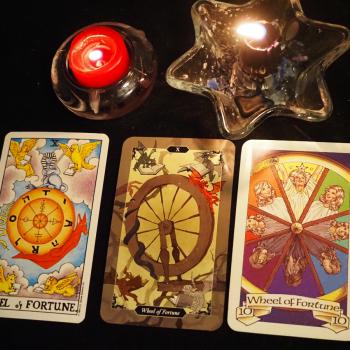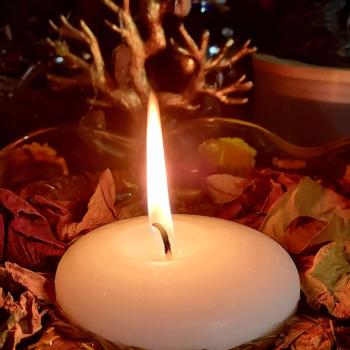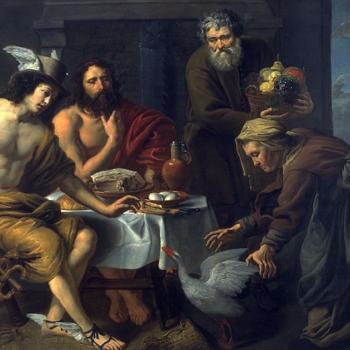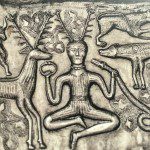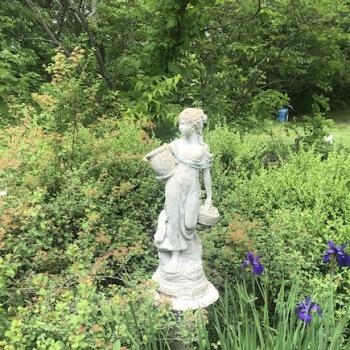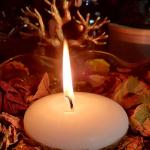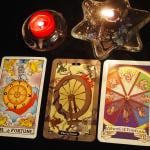 You’ve probably already stumbled across the New York Times article making the rounds about a papyrus fragment containing the words “Jesus said to them, ‘My wife …'” It’s an exciting discovery, not because it proves that Jesus had a wife (it doesn’t), but because it speaks to the diversity in the emerging Christian movement 1800 years ago.
You’ve probably already stumbled across the New York Times article making the rounds about a papyrus fragment containing the words “Jesus said to them, ‘My wife …'” It’s an exciting discovery, not because it proves that Jesus had a wife (it doesn’t), but because it speaks to the diversity in the emerging Christian movement 1800 years ago.
When I talk to my Evangelical friends about their faith they always describe it as “unchanged” since the time of Jesus, Peter, and Paul, but that’s simply not true. I’d argue that the religion of Jesus is only marginally similar to the religion of Paul, and that both of those gentlemen carried distinct and different messages. In antiquity there were dozens, perhaps hundreds, of different and competing Christianities. It took nearly four hundred years before there was anything approaching an Orthodox Christianity, and much of what was declared party line emerged as the result of violence and councils held by Roman Emperors.

Orthodoxy in any religion takes a great deal of time to develop. The ancient Hebrews shared a belief in one Supreme Male God, but many of them also worshipped his wife Asherah (and perhaps other deities as well). It took centuries for the worship of Asherah by the Hebrews to wither and die, and again, much of that came as the result of violence. As the book of Exodus says “Break down their altars, smash their sacred stones and cut down their Asherah poles.” Delightful.
I’ve always been fascinated by early Christianity and it’s development. The Church (or probably more accurately “The Churches”) of the year 100 has almost nothing in common with most Christian groups in 2012. Some of that is certainly cultural, but a lot of it is because beliefs and orthodoxy had yet to develop. In the year 100 of the Common Era (seventy years or so after the death of Jesus) there was no “New Testament” and the Gospel of John might not have even been written yet. Coincidently, the Modern Pagan movement is only about seventy years old.*
Periodically you’ll hear shouts in the Pagan blogosphere for some sort of “orthodoxy.” It would be nice if we could all agree on the definition of “Pagan” (or even agree on whether or not it should be capitalized), let alone orthodoxy, but give it some time. We’ve only been using the word “Pagan” for about forty years. Mormonism is similar in age to Modern Paganism and that faith continues to go through growing pains (African-American males weren’t allowed to be priests in the Mormon Church until 1978), why should we be any different? If history is doomed to be repeated, we are a long way from any sort of orthodoxy.
That doesn’t mean it’s not coming. We have become more orthodox over the last forty years, though it’s not always painfully obvious. Star wrote an insightful little post last week about The Problem of Personal Experience. Buried in the comments section were some brilliant insights that spoke of the lack of orthodoxy in Modern Paganism and how we are growing towards it, even without realizing it. Decades ago, before rituals were really printed in books, people “called the quarters” in configurations that might seem odd to many of us today (think Earth in the West), but with the availability of ritual material that has changed. In some ways, books have made us less eclectic, because the majority of us agree on a certain system of correspondences. Even if you hold onto an alternative construction in private ritual, doing anything outside of that basically requires you to equate East with Air.
Eclecticism (and especially Eclectic Wicca) has brought a certain orthodoxy with it. Before there were 1,194 (not the real number) books on the subject, different “Wiccan Traditions” could conceivably use dozens of different ritual structures, techniques, deities, and correspondences. I’m sure that the explosion of Eclectic Wicca has done little to change those things inside actual traditions, but outside of those traditions, it has given lots of Pagans (but certainly not all) a language and a system that’s generally agreed upon in public and large group settings. Due to Eclectic Wicca** being the most dominant form of Western Paganism, it’s a system that is at least familiar to most Pagans. Go to a “Pagan Festival” and you’ll get an opening ritual with someone calling four quarters, casting a circle, invoking a Goddess and God . . . . . . ya know, Eclectic Style Wicca.
While some Pagan groups have moved away from the “Gardnarian Magnet,” they still speak in language familiar to most Pagans. I can walk into a room full of ADF Druids and have more than enough in common with them that we are capable of arguing talking for several hours about a common belief system. Sure, we don’t do the same types of rituals, and we may not worship/honor the same gods (and the deities honored in ADF vary from grove to grove, no sweat there), but we read the same books and blogs, and go to the same festivals. That’s all a part of the move to some sort of orthodoxy within the Pagan movement as a whole.
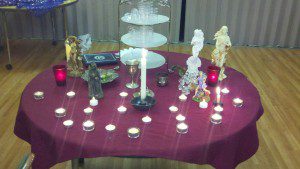 It’s true that we are basically a bunch of smaller self-sustaining groups, but that doesn’t mean our demise is imminent, or even likely to happen anytime soon (or far in the future). Christianity began roughly the same way, with people meeting around a kitchen table sharing wine and bread, there was no church structure seventy years in, and just as many people thought Paul was a jackass as thought he was an apostle. The fact that we can band together to send Patrick McCollum to Italy speaks to how far we’ve come in a very short period of time. Yes the National (or International) Federation of Pagans is a long way off, but we are starting to get to a place where we at least recognize a good spokesperson.
It’s true that we are basically a bunch of smaller self-sustaining groups, but that doesn’t mean our demise is imminent, or even likely to happen anytime soon (or far in the future). Christianity began roughly the same way, with people meeting around a kitchen table sharing wine and bread, there was no church structure seventy years in, and just as many people thought Paul was a jackass as thought he was an apostle. The fact that we can band together to send Patrick McCollum to Italy speaks to how far we’ve come in a very short period of time. Yes the National (or International) Federation of Pagans is a long way off, but we are starting to get to a place where we at least recognize a good spokesperson.
It often feels like Modern Paganism is rapidly moving away from any sort of orthodoxy, even as I argue that it’s not. Ten years ago I probably would have argued that most Pagans were polytheists, now there are a lot of Atheist Pagans, even as some things change, I still think that we are continuing to find common ground amongst ourselves. In the last few weeks I’ve witnessed two civil conversations that I thought would become heated, but our community was able to rise up and discuss Humanist Paganism and Are Satanists Pagan? with grace and civility. Much of that is because of the shared languages and experiences common to so many of us, the things that pave the way towards some sort of orthodoxy.
Does the idea of a Pagan Orthodoxy frighten me? If our recent past is any indication, not particularly. As we move forward defining Modern Paganism, my guess is that we will do it without violence or shouting, and we that we will figure out a way to make Modern Paganism a very big tent. I also have a hunch that we won’t be arguing the marital status of our gods 1800 years after the fact.
*I tend to date the official start of Modern Paganism to 1939, the year Gerald Gardner was initiated into a coven of witches in New Forest England. Were there people doing things we might recognize as Modern Pagan before 1939? Most certainly. There were also groups that looked a lot like early Christianity before the birth of Jesus. Nothing just emerges out of a vacuum, and religious movements are often the result of impulses that have built up over time, Paganism, like Christianity, is a good example of this phenomenon.
**I have no numbers to back this up, but I’m going to bet it’s true. Even initiated Witches often participate in large group rituals, which generally involve Eclectic Wiccan Style ritual.






